#High Efficient Motor's
Text

Tata ULTRA T11 | Light Commercial Vehicle | Tata Motors Vietnam
Discover the Tata ULTRA T11, a versatile light commercial vehicle designed to deliver superior performance and fuel efficiency. Explore its advanced features, robust build, and impressive payload capacity, making it the perfect choice for business needs in Vietnam. Learn more about Tata ULTRA T11 at Tata Motors Vietnam.
#Tata ULTRA T11#light commercial vehicle#Tata Motors Vietnam#fuel-efficient trucks#high payload capacity
0 notes
Text
Best washing Machine For Laundry Use
When it comes to selecting the best washing machine for your laundry needs, Avon Engineering washing machines stand out as a top choice. Here's why:

Experience hassle-free laundry days with our Washing Machine’s intelligent features. Moreover, from automated water levels to precise wash cycles, it ensures optimal cleaning while conserving resources.
Trust in the gentle touch of our machine. Additionally, with carefully crafted wash programs and drum movement, it ensures your clothes are treated with care, preserving their quality and extending their lifespan.
Say goodbye to stubborn stains. Furthermore, our Washing Machine boasts advanced stain removal technology, effectively targeting and eliminating even the toughest marks, giving your clothes a fresh lease on life.
We understand the importance of sustainability. Consequently, our machine is designed to optimize energy consumption without compromising on performance, reducing your environmental footprint and utility bills.
Whether you have a small load or a hefty batch, our Washing Machine’s generous capacity can handle it all. Regardless, there’s no need to compromise on laundry volume or quality.
Simplifying laundry chores, our machine features an intuitive interface. As a result, easily select wash cycles, customize settings, and monitor progress with just a few taps.
Bid farewell to noisy laundry sessions. In addition, our machine operates quietly.
Crafted with precision engineering and quality materials, our Washing Machine is built to withstand the rigors of frequent use. Therefore, it’s a reliable companion for years to come.
#Washing machine#Laundry machine#Clothes washer#Washer#Front-loading washing machine#Top-loading washing machine#Energy-efficient washing machine#High-capacity washing machine#Smart washing machine#Quiet washing machine#Compact washing machine#Stainless steel drum washing machine#Washing machine with steam function#Washing machine with inverter motor#Avon Engineering washing machine#Energy Star washing machine#Water-efficient washing machine#Gentle on clothes washing machine#Quick wash cycle washing machine#Delay start washing machine#Child lock washing machine#Automatic detergent dispenser washing machine#Adjustable spin speed washing machine#Wi-Fi enabled washing machine#Smartphone-controlled washing machine#All-in-one washer dryer combo#Best washing machine for large families#Best washing machine for small apartments#Commercial washing machine for businesses#Industrial washing machine for laundromats
1 note
·
View note
Text
Narwal Freo X Ultra - TDP Review
The Narwal Freo X Ultra marks a significant leap forward in the world of robotic vacuum cleaners. Building on the foundation laid by its predecessor, the Narwal Freo, this latest model introduces a suite of advanced features that promise to elevate your home cleaning experience to new heights. With the Freo X Ultra, Narwal has not only increased the power and efficiency of the vacuum but has also…

View On WordPress
#advanced navigation#app control#battery performance#cleaning innovation#cleaning tech#durable vacuum#dust compression#efficient cleaning#floor care#floor cleaning#high suction#high-end robot#home automation#home care tech#home cleanliness#household gadgets#intelligent cleaning#intelligent tech#Long Battery Life#maintenance tips#mopping robot#Narwal Freo X Ultra#obstacle avoidance#pet hair removal#powerful motor#premium vacuum#robotic mop#robotic vacuum#self-cleaning mop#smart appliance
0 notes
Text
High Efficiency Motors, Standard Motors High Efficiency, Energy Efficient Motors, India
High Efficiency Motors, Standard Motors High Efficiency, Energy Efficient Motors, Cooling Tower Motors, Flameproof Motors, Brake Motors, Supplier, Dealer, Mumbai, Maharashtra, India.
#High Efficiency Motors#Standard Motors High Efficiency#Energy Efficient Motors#Cooling Tower Motors#Flameproof Motors#Brake Motors#asia#asian
0 notes
Photo

(via GIPHY)
#giphy#furnace installation#furnace replacement#furnace repair services#furnace cleaning#furnace maintenance#furnace filter replacement#furnace technicians#furnace troubleshooting#furnace not turning on#electric furnace repair#gas furnace repair#oil furnace repair#furnace blowing cold air#furnace making strange noises#furnace tune-up#high-efficiency furnace#furnace upgrade#pilot light wont stay lit#blower motor replacement
0 notes
Text

The sensorless BLDC motor controller works without a sensor; it detects the rotor's position by estimating back electromotive force (back EMF).
0 notes
Text

Premium Quality Permanent Magnet AC Synchronous Motor Manufacturer in India - J.D. Engineering Works Buy premium quality permanent magnet AC synchronous motor manufacturer in India from J.D. Engineering Works. For any queries regarding Permanent Magnet Synchronous Motor or IE4 Synchronous Motors or High Efficient Synchronous Motor or Permanent Magnet AC Synchronous Motor, visit our website or call us at +919873699384, +919582345931, +918851614166, +919289311243 or mail us at [email protected]
#permanent magnet synchronous motor#synchronous motor#AC synchronous motor#Permanent Magnet Synchronous Motor Manufacturer#Permanent Magnet Synchronous Motor Manufacturer in India#Permanent Magnet Synchronous Motor Manufacturer in Delhi#pmsm motor manufacturer in India#pmsm motor manufacturer in Delhi#permanent magnet synchronous machine#permanent magnet ac synchronous motor#IE4 synchronous motors#High Efficient Synchronous Motor#permanent magnet synchronous ac motor#synchronous ac motor#Efficient Synchronous Motor
1 note
·
View note
Text






Sbarro Two for 100, 2011. Presented at the Geneva Motor Show, an experiment in lightness and efficiency. The name refers to the car's fuel consumption, 2 litres per 100km. Weight was limited to 500kg, engine capacity to 600cc. The car can be driven either in a low position to enhance aerodynamics and performance, or in a high position for better visibility in town, where aerodynamics are less important (see brochure). That's Francesco Sbarro in the driver's seat.
#Sbarro#Sbarro Two for 100#concept#prototype#lightweight#aerodynamic#Geneva Motor Show#futuristic#mid-engine#2011
302 notes
·
View notes
Text
Excerpt from "The Dangers of Disconnect Syndrome"
"There is a reason that 8 hours is the maximum recommended time for a pilot to be deployed in the field. The pilot selection process already trends heavily towards individuals with high neuroplasticity, and extended time spent in neural sync only exacerbates this issue.
A pilots brain is molded to maximize efficiency, both through training and chemical cocktails, in order to handle the processing load of actually controlling a mech. IMPs help with this, of course, handling calculations and translating impulses into commands.
However, should a pilot spend more than 8 hours at a time in neural sync, this enhanced neuroplasticity starts to have more dangerous side effects. Past 8 hours, a pilots brain will start to form neural shortcuts to operate more efficiently. Many pilots have reported this to feel like their machines are suddenly running more smoothly, and responding faster to their neural commands.
The drawbacks of this process are not seen until the pilot returns to base and disconnects from their mech, at which point we start to see the typical symptoms of Disconnect syndrome. This is because the pilots brain is bypassing the already built pathways for controlling their actual flesh and blood body in order to more efficiently interface with the neural link. The technology behind the neural link is programmed to translate mental impulses for things like moving limbs or twisting our body into the corresponding commands for a mechanized suit. This translation is obviously not perfect. That's why IMPs exist and are trained on a pilots neural pattern from the moment that pilot enters the program.
After a long enough time in sync, however, a pilots brain learns to bypass that translation altogether and send the distinct input signals required to activate the various parts of their machine. In short, their brain learns to better control the mech by bypassing their own motor functions."
-- Lecture given by Dr. Eva Tyomkin, Head of Neural Research at SHI. Conference for Mechanized Innovation, 2145.
#cybernetic dreams#mechposting#mechaposting#mechs#mech pilots#disconnect syndrome#writing#microfiction#empty spaces
173 notes
·
View notes
Note
Obviously all the Turks can drive because of their job but that also means they learned how to drive at incredibly fast speeds and doing insane, non road safe, definitely would get kick out of driver’s ed stunts. So who is the best chauffeur for Rufus and who is the worst?
Best chauffeur: Reno. Maybe it's how cool and unbothered he is, maybe it's the weed, but Reno is the best chauffeur there is. He's lived in Midgar for most of his life and knows time-efficient shortcuts to get Rufus around easily. He's also a talker. Rufus has heard the story of how Reno hosted Rude's birthday party and "beat the little kids to the piñata candy" a total of 43 times, and it's still more tolerable than one ride with the worst chauffeur.
Worst chauffeur: Tseng. He isn't used to maneuvering a motor vehicle unless it's in a high speed chase. He yells at people. He attempts to run people off the road. One time, a car cut him off and Tseng pulled out a bazooka from the backseat. Never again.
74 notes
·
View notes
Text

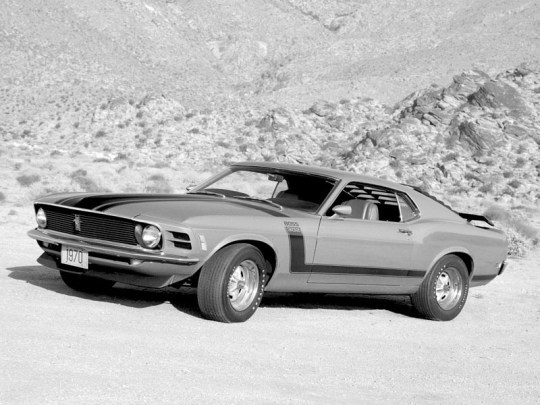
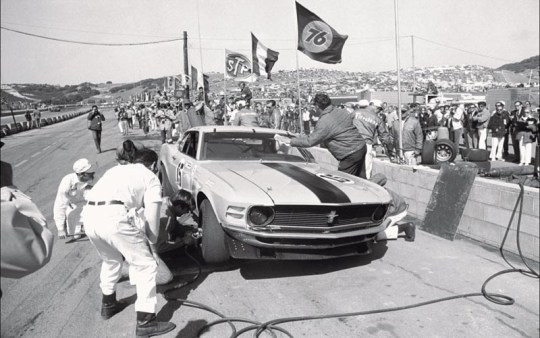
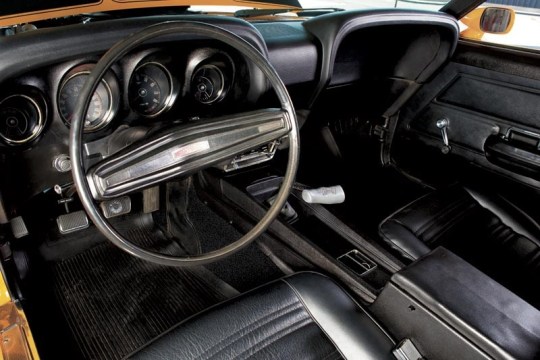
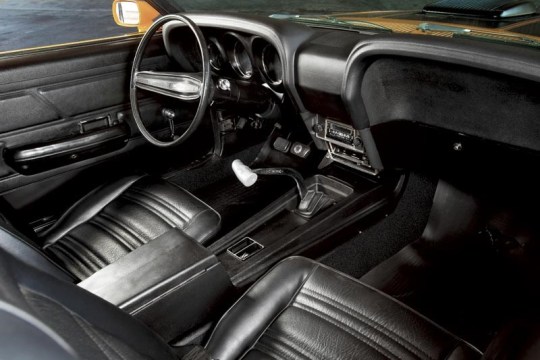



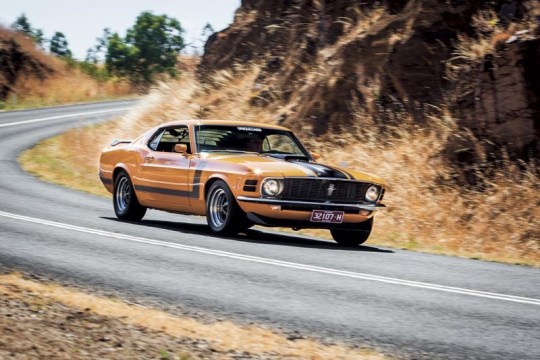

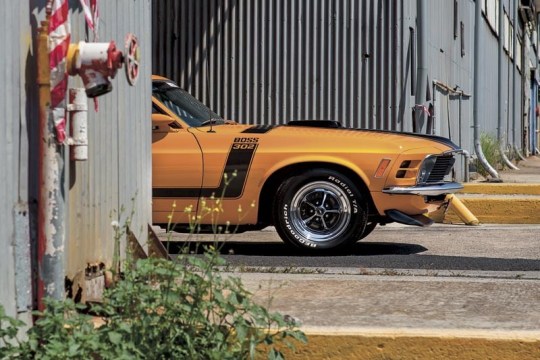
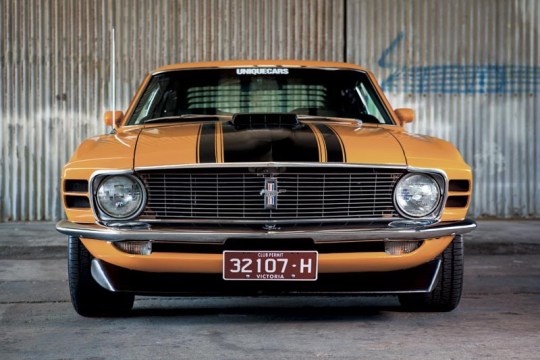

FORD MUSTANG BOSS 302
BOSS-A-NOVA!
They called it The Boss and for two short years it ruled the muscle car scene in the US, establishing itself as one of the greatest road and race cars of the era. Now, it’s one of the most collectible.
In 1960s US street lingo, if something was ‘boss’ it was cool, tough, the best. And the 1969 Boss 302 Mustang wore its badge with pride. It launched just four and a half years after the first Mustang was revealed to critical acclaim and record sales. Yearly updates to keep Mustang fresh in the face of tough new challengers from General Motors and Chrysler (particularly the Camaro) resulted in the once lean and pretty ’Stang muscling up, both in body shape and under-bonnet brawn, and the 1969-70 Boss models were the zenith of Mustang styling.
Thereafter, Mustangs became increasingly bloated and anaemic as the 1970s fuel crisis and stricter pollution laws cut horsepower and stylists lost their way; the rippling flanks and thrusting nose of the late 60s/early 70s cars gave way to boxy, bland designs. That early look would not be recaptured until 2005, when new Mustangs were given retro styling.
The Boss 302 was launched at the same time as its big-block brother, the Boss 429. Both were positioned as competition specials; Ford wanted to homologate its 302-cuber for Trans-Am and the 429ci monster for NASCAR. In fact, Ford went wild with engines between 1969-70, offering nine V8s – the ‘economy’ 302, 351 Windsor, 351 Cleveland, 390, 428 Cobra Jet, 428 Super Cobra Jet, 429 ‘wedge’, Boss 302 and Boss 429.
For the Boss 302, Ford’s high-compression 302ci small-block V8 was beefed up with four-bolt main bearing caps and redesigned ‘Cleveland’ cylinder heads with bigger inlet and exhaust valves, and ports that allowed the engine to breathe more efficiently.
These ‘semi-hemi’ heads were based on the Ford 427ci racing engine’s combustion chambers, and a balanced forged steel crankshaft and forged steel conrods allowed the engine to handle high rpms for sustained periods. A single 780cfm four-barrel Holley carburettor sat atop a high-rise aluminium inlet manifold, while a dual-point distributor, high-pressure oil pump, windage tray and screw-in welch plugs were further indications of its competition intent.
A rev limiter was fitted, progressively cutting spark from 5800rpm to 6150, but it was easily bypassed and the Boss 302 could reportedly keep making power up to 8000rpm with minor mods. In the muscle car marketing war, Ford claimed a peak horsepower figure of 290bhp at 5800rpm (the same as the Camaro Z/28), but that was extremely conservative.
Two four-speed manual Top Loader transmissions were available: a wide-ratio ’box with Hurst shifter more suited to street and strip use, and a close-ratio unit for racing. Adding to the race or road options list were four diffs: the stock 3.5:1 nine-inch, Traction-Lok 3.5:1 and 3.91:1 and the No-Spin 4.30:1 built by Detroit Automotive. Axles and diff centres were also strengthened to take the loads.
Suspension was also race-inspired with heavy-duty springs, shocks and sway bar up front, and Hotchkiss-style rear suspension with heavy-duty leaf springs, sway bar and staggered shock absorbers. The left-hand shock absorber was bolted behind the axle and the right in front, to reduce axle tramp under acceleration. Amazingly for such a high-performance car, braking was still only discs and drums with power assistance.
Ironically, the Boss 302’s sexy shape was styled by former General Motors designer Larry Shinoda, who is often credited with coming up with the Boss moniker. When asked what he was working on, he replied, "The boss’s car", a reference to new Ford president ‘Bunkie’ Knudson, who was also ex-GM and had recruited Shinoda to Ford.
While the wheelbase remained unchanged at 2740mm, the ’69 Mustang was 96.5mm longer overall to accommodate all the V8s offered, although the big-blocks still had to be shoe-horned under the bonnet. Shinoda’s ’69 Boss 302 was also one of the first production cars to offer an optional front air dam and adjustable rear wing, and his use of high-contrast black panels, rear window SportsSlats, and go-faster stripes made the Boss a real attention-grabber. The ’69 was also the only quad-headlight Mustang, a feature that was dropped for 1970 models.
In 1970, American Hot Rod magazine dubbed the 1970 Boss 302 as "definitely the best handling car Ford has ever built", while the conservative Consumer Guide called it "uncomfortable at any speed over anything but the smoothest surface". Unique Cars resident Mustang maniac, ‘Uncle’ Phil Walker, never read the Consumer Guide review, but even if he had it wouldn’t have stopped him buying the immaculate 1970 Grabber Orange Boss 302 you see here.
Phil already has his beloved 1966 Shelby GT350H, but the Boss 302 really got his Mustang juices percolating. And he wasn’t alone, because the first Boss he saw, some 43 years ago, is still one of Australia’s most iconic race cars: Allan Moffat’s Trans-Am racer. Phil remembers it clearly.
"I saw Moff race it Calder and I was inspired to own one," Phil recalls. "It was the most aggressive-looking car; its stance was something you had to see to believe. It looked like it was doing a million miles per hour when it was parked.
"My Boss was originally a one-owner car and I bought it from a friend of mine in California, Dave, who I also bought my Shelby GT350H from 19 years ago. Dave found it in a barn with a blown engine, but in otherwise pretty good condition.
"The lady who owned it from new didn’t realise it had a high-compression engine and had run it on standard fuel. When it blew up she just parked it.
"Dave did a nut-and-bolt restoration over two years, then put it up on his hoist. He didn’t want to sell it, but I got my way in the end – unfortunately he had the last say on the price (laughs). I didn’t even bother to test drive it; I knew it was a good car. It had 21 (new) miles on the odo when I picked it up and only 54,000 miles in total."
Since then, Phil has only put a couple of hundred miles on the car, but that’s enough for him to have bonded with it.
"I’ve only had the Boss since January and it’s growing on me. It’s different to the Shelby. It’s bigger and very low.
"The engine is incredible. Dave is one of the best engine builders in California and when he rebuilt the 302 he changed the cam spec. US camshaft technology was okay in the 60s and 70s, but if you had a big-cam muscle car they wouldn’t idle and they were terrible for driving in cities.
"A proper Boss engine can rev to 8500rpm all day and for a V8 that’s pretty serious. But they’re not renowned for low-down torque; it starts coming on from 3500rpm. My car still has a solid-lifter cam, but it pulls like a train from 1200rpm in top gear and I can drive it around at 1500rpm in top all day.
"It’s got the four-speed close-ratio Top Loader with the long first gear and with a 3.7:1 rear end it does about 55-60mph (89-97km/h) in first gear. It bloody goes!"
Phil is a fussy bugger and his cars have to look just right, so Russell Stuckey from Stuckey Tyres has ordered him a set of genuine 15 x 8 Minilites from England to replace the standard Magnum 500s.
"I want it to look like the Parnelli Jones race car, and to get the stance I want it’s going to have 275/60s on the rear and 255/60s on the front. At the moment it’s a pretty car that is tough, but I want a tough car that looks tough. And that’s all I’m going to do to it."
After his first real fang in the Boss, Phil felt that his Shelby would be half a lap in front at the end of a 10-lap sprint at Sandown, but now thinks the Boss would be quicker. We might have to put both to the acid test one day. What do you mean "no way", Phil?
It was a nervous Phil who turned up at a Melbourne storage facility in January to pick up his new Boss 302. So nervous, in fact, that he took along Unique Cars art director Ange and a sturdy tow rope – just in case.
The storage people were even more apprehensive – they had been warned about just how anal he is with his cars, as he explains: "The lady there said, ‘You must be pretty fanatical because we’ve been given strict instructions that no one is to touch the car except you’." Fortunately, the car arrived in pristine condition.
"I was pretty excited, I’d been waiting for seven weeks," Phil laughs. "I took the car cover off it, fired it up, and it drove home like a brand new car. It was as good as I thought it would be. I spent the next three hours washing it."
Sounds like our Phil.
PARNELLI AND ME
Three years ago, my mate Dave and I were invited to a Trans-Am dinner at Portland International Raceway where Dave was racing his 1970 Trans-Am Boss 302 and I was crewing for him.
When we were driving there we noticed this black Mercedes following us. When we stopped it did too and this bloke got out and said, "I noticed you guys back at the hotel. You’re going to the Trans-Am dinner aren’t you? I’m lost." It was Parnelli Jones!
I jumped in with him and when we got there I ‘invited’ myself onto Parnelli’s table, which also included Pete Brock – the guy who designed the Shelby Daytona Coupe. There was I, Mr Nobody, with all these US racing heavies, but Parnelli was a real gentleman, not up himself in any way.
The next day they had free lap time at Portland and, when I saw Parnelli there with Ford’s new ‘Parnelli Jones’ Boss 302 tribute Mustang, I asked if there was any chance of a ride and he said jump in. We did 10 laps and the guy hadn’t lost any of his ability; my eyes were getting bigger and bigger coming into the corners.
It was a great experience that I’ll never forget. – PW
IT's MINE...
Moff’s Mustang is probably the most iconic Australian racecar and after seeing it I was inspired to own a Boss Mustang.
Then, about 25 years ago, I went to Pebble Beach in Monterey for the first time and saw a 1970 Grabber Orange Boss 302, which was the colour Parnelli Jones raced in Trans-Am. That day I knew I had to own a Boss. It was the car I’d always wanted after my Shelby, which was my lifelong dream car.
My Boss 302 is fully optioned, including the Shaker, extra side mirror, tacho and rear louvres, and it’s got a lot of wow factor. When you drive down the freeway, you get the thumbs-up from all sorts of different people. I think it’s the colour.
It’s closer to show standard than my Shelby. It’s got the paint marks on the tailshaft and all the little concours details, but I’m never going to show it; I’m not into that.
The 1969/70 body shape is still the best. Ford got it right then, but lost the plot after that and it’s reflected in their collectibility today. – PW
#car#cars#muscle car#american muscle#ford#FORD MUSTANG BOSS 302#ford mustang#boss 302#MUSTANG BOSS 302#mustang
161 notes
·
View notes
Text
The Lauffen-Frankfurt Experiment of 1891: A Landmark in Electrical Engineering

In 1891, an experiment in Germany transformed the future of electricity. The Lauffen-Frankfurt experiment marked the world's first successful long-distance transmission of three-phase electric power. Stretching approximately 175 kilometers (or 109 miles) from Lauffen am Neckar to Frankfurt am Main, it was a highlight of the International Electrotechnical Exhibition. Key figures included Oskar von Miller, the exhibition's chief organizer; Mikhail Dolivo-Dobrovolsky, who designed the three-phase generators; and Charles Eugene Lancelot Brown, an engineer from Switzerland's Maschinenfabrik Oerlikon, which supplied much of the equipment.

So, what made this experiment groundbreaking? They set up a three-phase AC system powered by a robust 300-horsepower generator, stepping up the voltage from 55 volts to an impressive 8,500 volts for efficient long-distance transmission. This setup, featuring three copper wires, successfully delivered enough power to run a 100-horsepower motor and illuminate 1,000 incandescent lamps at the exhibition.
What is three-phase? Think of it like a three-lane highway. With just one lane (single-phase), you can only have one car (or current) at a time, which leads to traffic jams. But with three lanes, multiple cars can move smoothly side by side, ensuring a steady flow. This means electricity can be delivered more efficiently and with less flicker, making it ideal for powering everything from lights to heavy machinery. While it might seem logical to add more phases for even better efficiency, three-phase systems are often the sweet spot. They provide balanced and constant power delivery, making them highly efficient for most applications. Adding more phases increases complexity without significant efficiency gains—like a six-phase system that might reduce ripple but complicates design, equipment, and maintenance.
The significance? This experiment demonstrated that electrical power could be transmitted over long distances with much less energy loss than DC systems. It achieved an impressive 75% efficiency, showcased the advantages of a three-phase system—like smoother power delivery—and highlighted the importance of voltage transformations for effective transmission. Essentially, they figured out how to make electricity travel like a well-coordinated relay race, where each runner (or phase) keeps the momentum going.

After the experiment, discussions arose about who truly invented the three-phase system. Charles Brown, a key figure in the German experiment, stepped up to give credit where it was due. In a letter published in The Electrical Review on February 12, 1892, he acknowledged the significance of the three-phase system while emphasizing that the main goal was to prove the feasibility of safely transmitting high-tension currents over long distances. He noted that although the three-phase current added complexity, its benefits for powering multiple motors simultaneously were worthwhile. Most importantly, he stated, “The three-phase current as applied at Frankfurt was due to the labors of Mr. Tesla and will be found clearly specified in his patents.”
Brown specifically referenced Tesla's patents filed on October 12, 1887: Patent No. 381,968 for an "Electromagnetic Motor" and Patent No. 382,280 for "Electrical Transmission of Power," which detailed a three-phase power system. These patents were foundational to the technology used in the Lauffen-Frankfurt experiment.
Brown’s acknowledgment highlights Tesla’s innovative spirit, which transcended borders and spurred advancements in Europe. His patents laid the groundwork for the three-phase current used in this experiment.
Tesla's patents weren’t mere formalities; they were foundational blueprints for modern electrical systems, including designs for polyphase AC systems that predated the Lauffen-Frankfurt experiment by several years. Brown's emphasis on the significance of Tesla's patents for the three-phase current demonstrated that many who discredit Tesla, even in today's debates, overlook their importance. This highlights Tesla's crucial role in developing the technology that both the German experiment and today’s innovations depend on.
In short, the Lauffen-Frankfurt experiment marked a pivotal moment in electrical engineering, proving the viability of long-distance AC power transmission and laying the foundation for today’s electrical grid. While it showcased German ingenuity, it also highlighted the collaborative nature of scientific progress, with Tesla's earlier contributions illuminating the path forward. The interplay between his theoretical innovations and the practical applications of this experiment illustrates how technological progress often builds on the brilliant ideas of others.
27 notes
·
View notes
Text
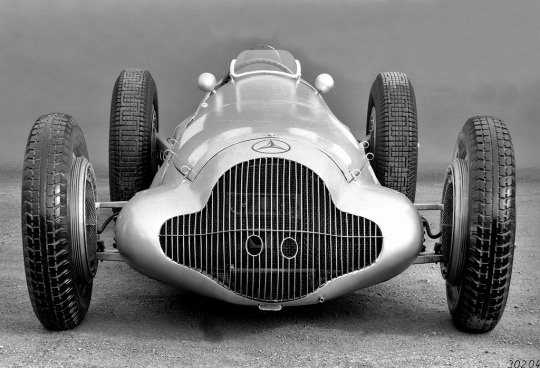

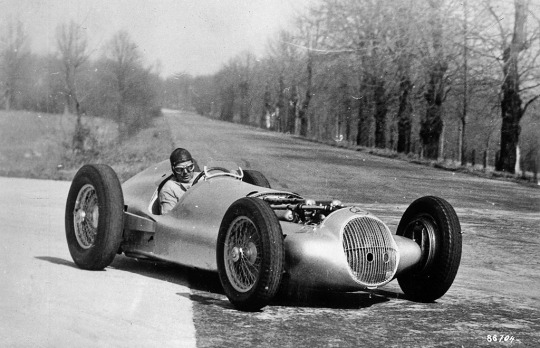
1938 Mercedes-Benz W154
In September 1936, the AIACR (Association Internationale des Automobile Clubs Reconnus), the governing body of motor racing, set the new Grand Prix regulations effective from 1938. Key stipulations included a maximum engine displacement of three liters for supercharged engines and 4.5 liters for naturally aspirated engines, with a minimum car weight ranging from 400 to 850 kilograms, depending on engine size.
By the end of the 1937 season, Mercedes-Benz engineers were already hard at work developing the new W154, exploring various ideas, including a naturally aspirated engine with a W24 configuration, a rear-mounted engine, direct fuel injection, and fully streamlined bodies. Ultimately, due to heat management considerations, they opted for an in-house developed 60-degree V12 engine designed by Albert Heess. This engine mirrored the displacement characteristics of the 1924 supercharged two-liter M 2 L 8 engine, with each of its 12 cylinders displacing 250 cc. Using glycol as a coolant allowed temperatures to reach up to 125°C. The engine featured four overhead camshafts operating 48 valves via forked rocker arms, with three cylinders combined under welded coolant jackets, and non-removable heads. It had a high-capacity lubrication system, circulating 100 liters of oil per minute, and initially utilized two single-stage superchargers, later replaced by a more efficient two-stage supercharger in 1939.
The first prototype engine ran on the test bench in January 1938, and by February 7, it had achieved a nearly trouble-free test run, producing 427 hp (314 kW) at 8,000 rpm. During the first half of the season, drivers such as Caracciola, Lang, von Brauchitsch, and Seaman had access to 430 hp (316 kW), which later increased to over 468 hp (344 kW). At the Reims circuit, Hermann Lang's W154 was equipped with the most powerful version, delivering 474 hp (349 kW) and reaching 283 km/h (176 mph) on the straights. Notably, the W154 was the first Mercedes-Benz racing car to feature a five-speed gearbox.
Max Wagner, tasked with designing the suspension, had an easier job than his counterparts working on the engine. He retained much of the advanced chassis architecture from the previous year's W125 but enhanced the torsional rigidity of the frame by 30 percent. The V12 engine was mounted low and at an angle, with the carburetor air intakes extending through the expanded radiator grille.
The driver sat to the right of the propeller shaft, and the W154's sleek body sat close to the ground, lower than the tops of its tires. This design gave the car a dynamic appearance and a low center of gravity. Both Manfred von Brauchitsch and Richard Seaman, whose technical insights were highly valued by Chief Engineer Rudolf Uhlenhaut, praised the car's excellent handling.
The W154 became the most successful Silver Arrow of its era. Rudolf Caracciola secured the 1938 European Championship title (as the World Championship did not yet exist), and the W154 won three of the four Grand Prix races that counted towards the championship.
To ensure proper weight distribution, a saddle tank was installed above the driver's legs. In 1939, the addition of a two-stage supercharger boosted the V12 engine, now named the M163, to 483 hp (355 kW) at 7,800 rpm. Despite the AIACR's efforts to curb the speed of Grand Prix cars, the new three-liter formula cars matched the lap times of the 1937 750-kg formula cars, demonstrating that their attempt was largely unsuccessful. Over the winter of 1938-39, the W154 saw several refinements, including a higher cowl line around the cockpit for improved driver safety and a small, streamlined instrument panel mounted to the saddle tank. As per Uhlenhaut’s philosophy, only essential information was displayed, centered around a large tachometer flanked by water and oil temperature gauges, ensuring the driver wasn't overwhelmed by unnecessary data.
40 notes
·
View notes
Photo

(via GIPHY)
#giphy#furnace installation#furnace replacement#furnace repair services#furnace cleaning#furnace maintenance#furnace filter replacement#furnace technicians#furnace troubleshooting#furnace not turning on#electric furnace repair#gas furnace repair#oil furnace repair#furnace blowing cold air#furnace making strange noises#furnace tune-up#high-efficiency furnace#furnace upgrade#pilot light wont stay lit#blower motor replacement
0 notes
Text

Brushless motor controllers work by creating a rotating magnetic field inside the motor's coils. To buy the product, visit the website.
0 notes
Text
get down to business.
The morning dew on the grass and streets of New York as the sun tries to break free from its cloud cage. Streaks of light come through bounce off glass buildings as Aiden makes a sharp turn not to collide with a woman walking her white poodle. The city’s quiet at this hour and perhaps that’s what Aiden loves so much about being an early riser is that there isn’t one thing he has to worry about right now except his heart rate and his cadence. He checks his watch at that thought and he’s at his typical average even though he’s taken a different route this morning, needing a little more time to clear his head before the new work week begins. The only thing blocking Aiden from here to his penthouse is the million of tasks lined up that rifles through his mind like Roldex. That, and the roads blocked all the way up the East Side for a marathon coming up.
He dodges pylons and barriers, slipping his way through to the front entrance of his building. Aiden’s calves have a slight ache to them as he walks inside and Edward calls an elevator for him which comes within moments. Aiden steps inside, a quick thank you to Edward, and presses one of the top buttons. The ride is efficient and opens up to the tiny hallway and all Aiden has to do is swipe a key fob and he waltzes into his place. He doesn’t bother so much with lights as he takes his running shoes off and removes his moisture-wicking t-shirt and matching shorts when he enters into his bathroom and steps into the shower.
Shower, coffee, toast with peanut butter and Aiden’s resisting every urge in him not to look at his emails before he needs to. It’s a motion he’s been putting in practice and is being enforced (encouraged) by his assistant as well. It’s for the better, he knows, Aiden can get such bad tunnel vision that he loses his entire day if he isn’t careful about it. So this is some kind of mid-year resolution. Here’s to hoping anyway. Cars start moving outside, the world waking up and that’s when Aiden gets his gears going. Navy suit, white shirt, coordinating tie, slick black dress shoes. Some days Aiden’s so dressed up, but there’s a series of meetings he’s in today so it’s best to look best. He is the boss afterall, at least one of them.
Like clockwork, Aiden is ready and out the door before most people’s second or third alarm is going off. Back in the elevator, he presses the button that goes to the garage level. Aiden takes his keys out of his pocket and unlocks an all black car situated beside another high end one and slips into the driver’s seat with the engine roaring to life. Three quick movements and he’s out of the spot and back out into the now bright and sunny New York streets, motoring down to the office.
Here’s to another week of being on top… of business, that is.
62 notes
·
View notes